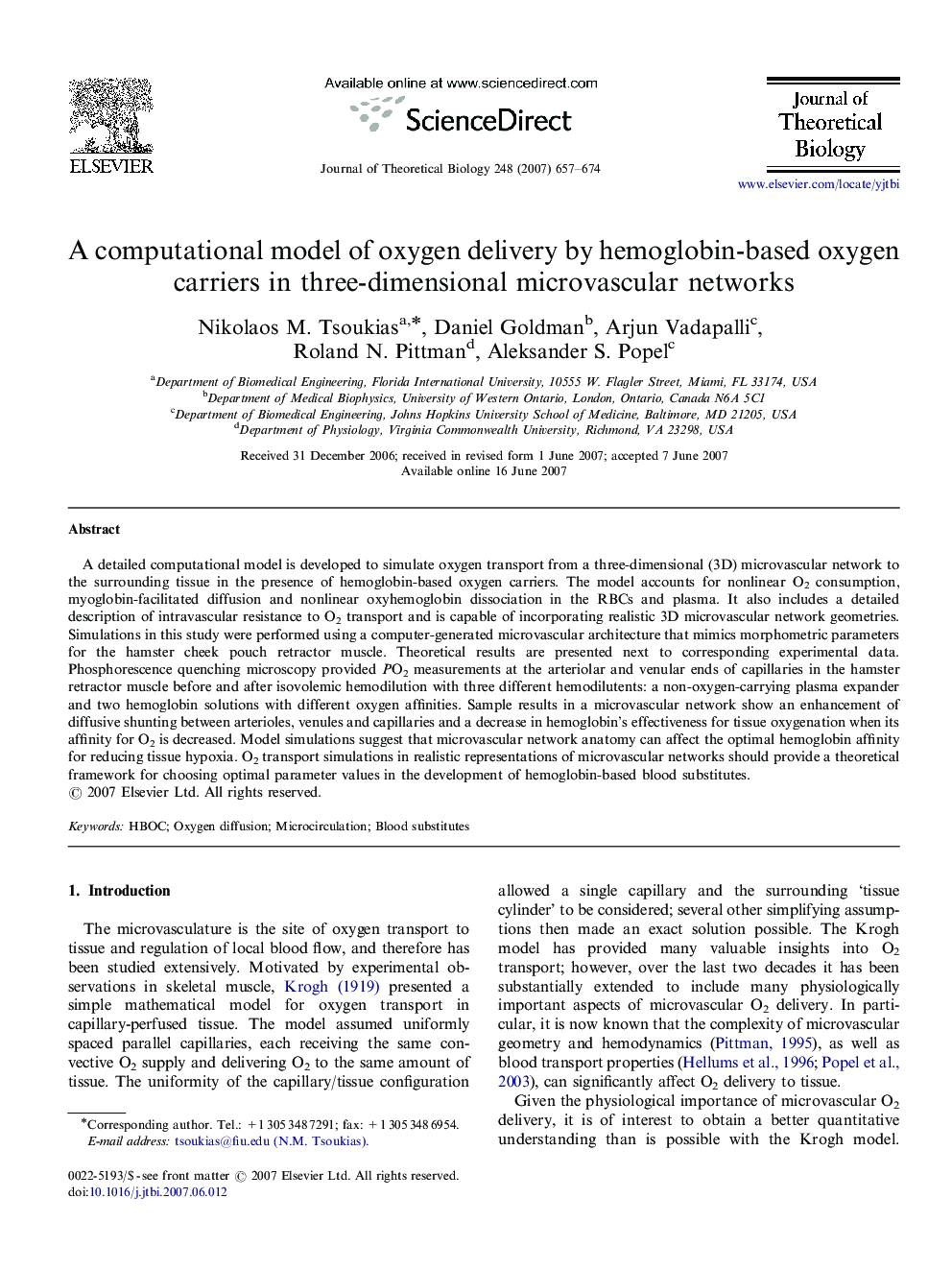| Article ID | Journal | Published Year | Pages | File Type |
|---|---|---|---|---|
| 4498976 | Journal of Theoretical Biology | 2007 | 18 Pages |
A detailed computational model is developed to simulate oxygen transport from a three-dimensional (3D) microvascular network to the surrounding tissue in the presence of hemoglobin-based oxygen carriers. The model accounts for nonlinear O2 consumption, myoglobin-facilitated diffusion and nonlinear oxyhemoglobin dissociation in the RBCs and plasma. It also includes a detailed description of intravascular resistance to O2 transport and is capable of incorporating realistic 3D microvascular network geometries. Simulations in this study were performed using a computer-generated microvascular architecture that mimics morphometric parameters for the hamster cheek pouch retractor muscle. Theoretical results are presented next to corresponding experimental data. Phosphorescence quenching microscopy provided PO2 measurements at the arteriolar and venular ends of capillaries in the hamster retractor muscle before and after isovolemic hemodilution with three different hemodilutents: a non-oxygen-carrying plasma expander and two hemoglobin solutions with different oxygen affinities. Sample results in a microvascular network show an enhancement of diffusive shunting between arterioles, venules and capillaries and a decrease in hemoglobin's effectiveness for tissue oxygenation when its affinity for O2 is decreased. Model simulations suggest that microvascular network anatomy can affect the optimal hemoglobin affinity for reducing tissue hypoxia. O2 transport simulations in realistic representations of microvascular networks should provide a theoretical framework for choosing optimal parameter values in the development of hemoglobin-based blood substitutes.
